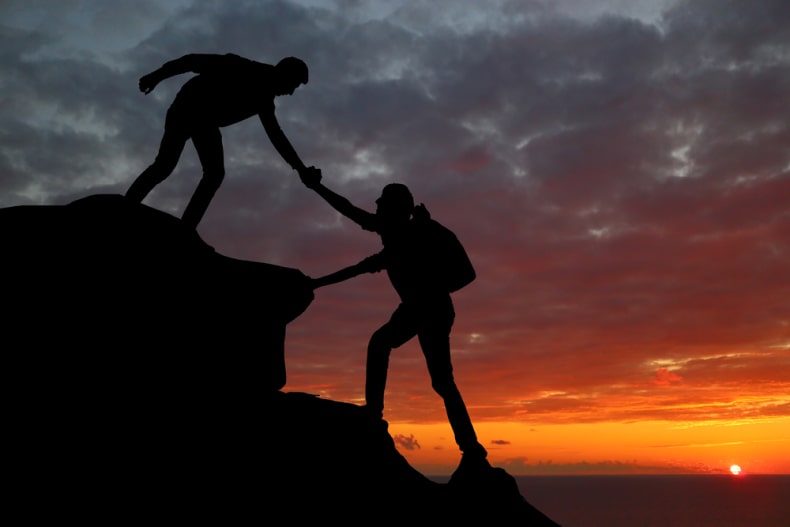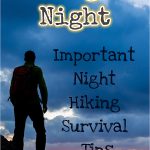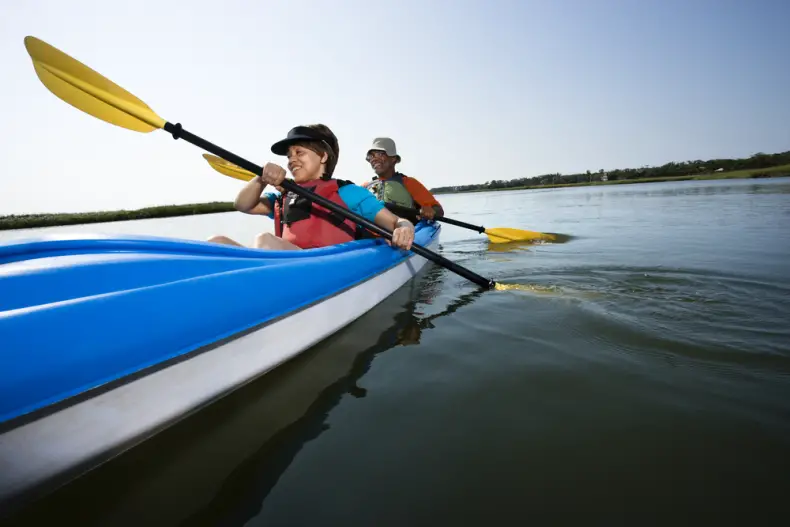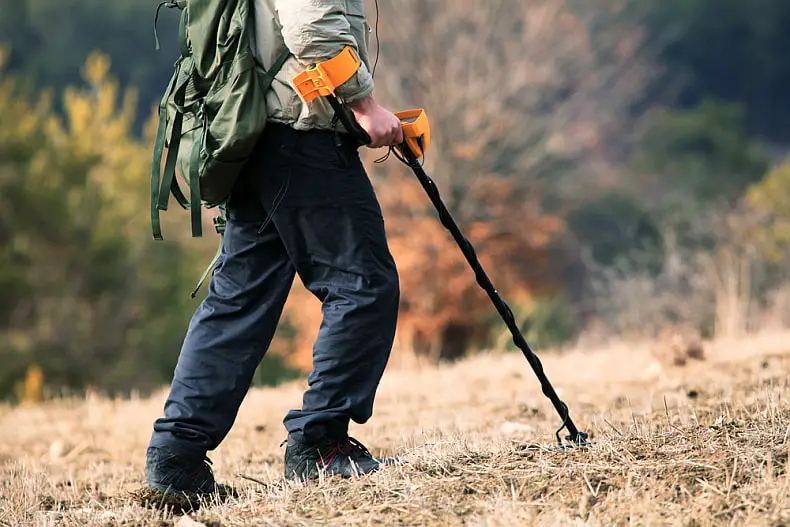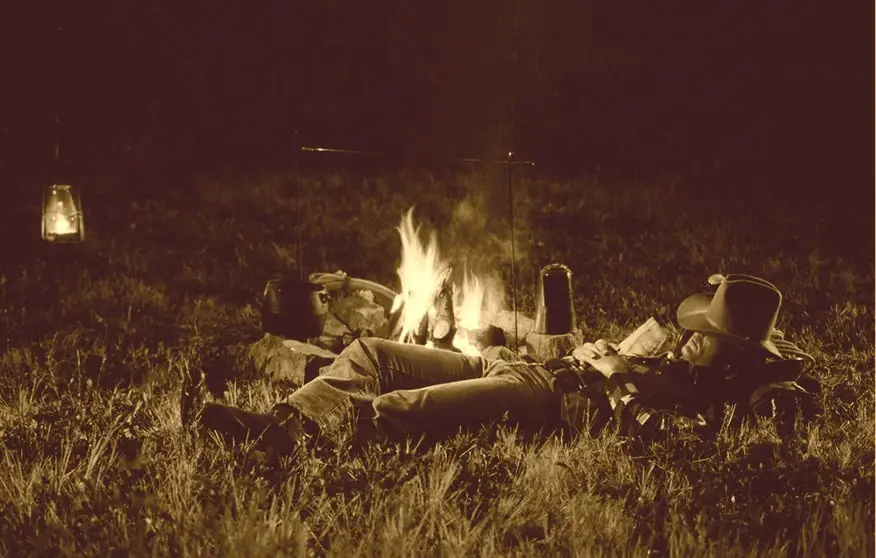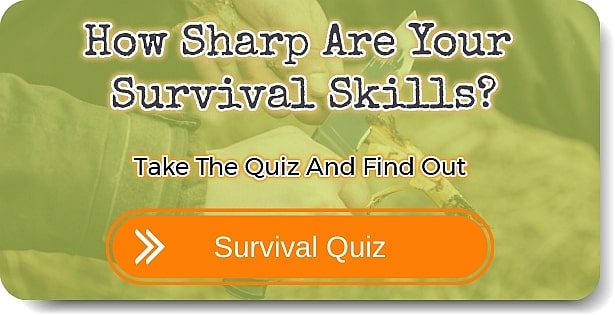How many people have gone hiking at night?
You may be wondering about this, what it even is, and why people do it. To be honest, the answer is unknown.
Is it recommended that someone do this? Often the obvious answer is “no” here.
When someone goes night hiking, they are usually not making a smart decision. When the sun goes down there is a lot that can go wrong, which is why no one ever says it’s smart to do. Although rare, there are times when it must be done.
Table of Contents
Why Hike At Night?
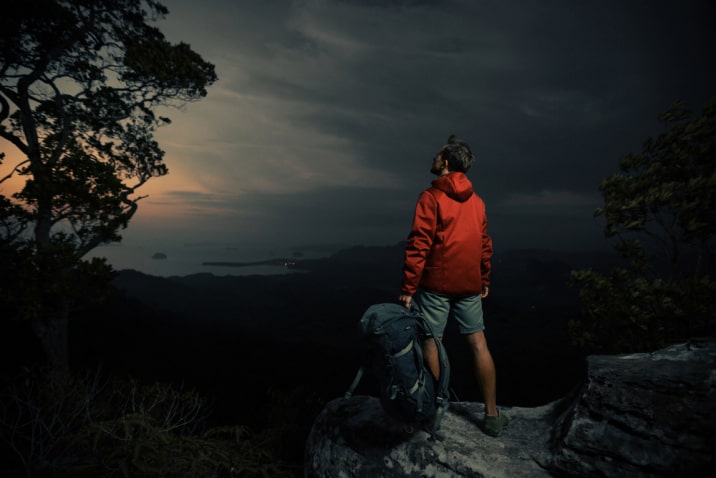
The main three reasons for night hiking have to do with survival needs. If by chance it is incredibly hot yet you need to get somewhere, it’s not a bad idea to hike at nighttime because you’ll likely be unable to move as far during the day. Heat can be a real killer, so anytime you’re in a place like the desert, moving at night is better than moving in the day.
If by chance your situations are poor or something goes wrong, you’ll need to go hiking at night then as well.
However, the scariest and worst period in which people have to go night hiking is when they are trying to escape a terrible place and/or person. This happens far more than you’d think. In these situations, you have to get out and move as quickly as you can to escape. However, you also have to evade and make sure no one will know where you’re going.
People who work for the Armed Forces in several countries are taught how to do this successfully and stay alive while doing it. We’ll only be going over a few of the things they do, but we recommend you look into it further.
The problems will be different for all of these situations. Therefore, we’re here to help you with all of them.
Is It Safe To Go Hiking At Night?
The quick answer is, oh hell no!
However, again, you may need to take this risk at certain times because you do not have a lot of choices available to you. If you don’t leave your spot, the conditions could be a lot worse compared to anything you’ll run into during the night. The best thing you can do is try to be prepared for as much as you can before you head out.
Whenever you go out during the night, the best thing you can do in every situation is to have proper lighting to be able to see. In cases of escape and evade, we recommend you wait until a full moon. You want low light, not a huge light, so if you can bring a headlight or flashlight that is a few hundred lumens max, this is a good thing. A full moon in the night sky will give you a lot of movement lighting without giving away your position easily.
A huge light will do that, meaning you’ll be found. This is clearly bad, so do your best to use the moon.
If you’re simply on the move during the night, not trying to escape and evade, then you want to get something good to light up the area. You want to see whatever you can all around you. One mistake while hiking up a hill or down could mean a broken leg, broken arm, or far worse. Every single step matters, so the best possible headlamp or flashlight is essential.
Headlamps & Flashlights:

When night hiking, you want something that’ll be weatherproof/waterproof and tough, in case you fall. You want to be careful to choose those with at least one low and high setting and be capable of long-lasting use.
For headlamps, you need to only use those with Lithium batteries as they last the longest. Most of these lamps can go 2 to 60 hours, the ones at the upper-end are usually using Lithium batteries. Be wary of the type that claims to be rechargeable. Many don’t last very long and start to become dim very quickly. This won’t help you at all if you’re going to be hiking a lot during the night. Where would you charge the light, right?
We’d recommend the Black Diamond Spot Headlamp. It runs for 65 hours on one set of AAA batteries (included) and fits everything mentioned above. It comes with a set of 3 alkaline batteries but we use lithiums for better durability, especially in extreme temperatures.
For normal flashlights, you want some of the same things mentioned above. Therefore, tactical flashlights are the best things to look for. The rechargeable batteries for this are usually okay because they can last for a long time on one charge.
Two flashlights stand out here: the Surefire UDR Dominator & the Fenix LD41 Flashlight.
They are both tough but the Surefire can go up to 2,600 Lumens, which is pretty dang good. Meanwhile, the Fenix can reach 960 Lumens, which is also good. However, the Fenix has the best battery use as it is supposedly able to reach 50,000 hours on one charge. Apparently, it can manage this thanks to a newer energy-efficient LED light within it known as the Cree XM-L2. While not as bright as the Surefire, it still is powerful and worth using.
No matter which light you use, it’s a good idea to bring extra batteries.
What To Do While Hiking At Night:

Ultimately, this all depends to be fair. As mentioned above, there are only a few reasons why someone would need to be on the move at nighttime anyway. While we’re not against hiking at night if you must, it’s just not smart to do if it can be avoided. Therefore, the biggest thing you need to do is to “stay safe.”
You’re going to be out and about during the prime period when animals hunt. Of course, depending on where you are hiking, this may or may not be a huge problem.
Throughout the United States, for example, there are tons of areas you do not want to be in the wild when night hits. In the South, Panthers or Cougars/Pumas/Mountain Lions will be present in many areas. These big cats along with Bobcats will be more than happy to eat a human if hungry enough. Wolves are also a huge issue here on top of Bears during certain times of the year.
Northern areas also see wolves and bears, but not as many big cats outside of Bobcats. The Bobcat is a medium-size “big cat” and doesn’t typically go for humans, but you never know.
Anyway, we mention all of that to make the point that you need something as protection. Clearly, a gun would make the most sense to take. If you do, you want to make sure it is easy to travel with and has a safety lock. This lock will ensure you do not accidentally shoot yourself or anyone with you. It may seem odd, but you’d be surprised how often this has happened during a hike.
Clearly carrying a knife is helpful too. You either need one that can close up or has a sheath to put the sharp end into. Again, all about safety here.
It’s also best to have matches or a firestarter with you for, well, fire when needed. Your light may go out, it may be insanely cold, etc. Fire will help with both at one time.
Hunting At Night:
If at all possible, be sure to pack some food that will be light and filling. Protein bars are perfect as well as jerky. You’d be surprised how helpful this can be when you’re in need of something. Yet it is possible that you may be hiking a lot at night. Due to the idea that many animals move about during the night…you may need food, so why not take down an animal?
If you have a gun, you can simply use this to get food by shooting an animal you know will be good food. It’ll likely also scare away other animals, so it’s all yours. If you have a knife only, then you’ll need to be clever and set up traps you can return to. However, this will likely take too long to do and wait on as you’re still in need of moving. This is a hike, of course.
Therefore, a small trap you know an animal will get caught in within an hour or so might be worth it. Much longer? Not so much.
Markings:
One thing you need to be careful about leaving behind in every single situation is markings. If you’re trying to escape, you want to do your best to find a stream, river, or something you can cross and leave no tracks behind to follow. This way, those coming for you will not know how to find you. They need a direction to follow, of course.
If you have a scent that can be tracked, you can mask this by using other plants with certain odors. But stay away from poisonous plants. Merely crush as many as you can down and, if possible, find some water and anything that can be a makeshift bowl. You can use a fire to then heat this up slightly but not too much. After you do, rub the stuff on yourself and it could very well help.
Combined with a smoke smell you leave behind, anything tracking you via smell will have too much going on to find you by scent. If you use water to walk in, markings and now scent are both gone and you’ll escape.
However, if you’re merely hiking to get places, then you need to mark places when possible for two reasons.
First, if you’re hiking at night, there is a good shot you may go around in circles. If this happens, you need to know. While knowing your environment is key, a lot can be tough to see at night. This is why we recommend marking areas you go to. This can be done in several ways.
If you have a bright marker, it can be used to draw on a tree. Don’t worry, this comes off after a while so the tree is cool. If you want to cut a marking you’ll see when crossing it like an X, your name, etc. This will work too. Anything you can do to mark your crossing.
This helps you but it also helps those trying to find you if you’re lost. When they have markings to use, tracking you down becomes much easier should you need to be rescued.
Where To Go When Night Hiking:
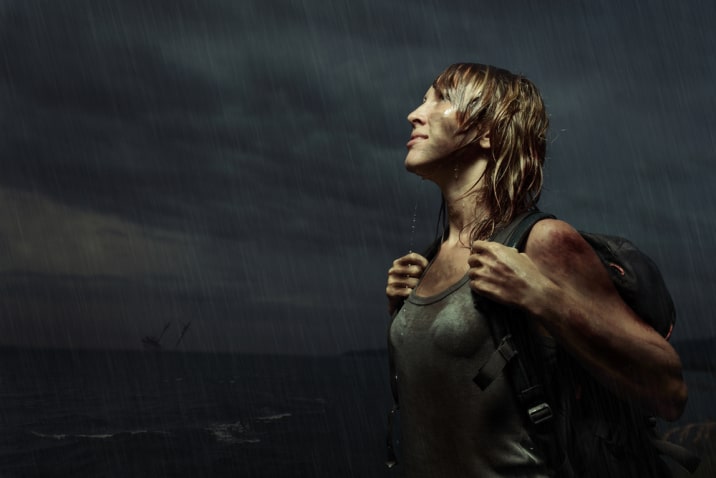
Honestly, if you’re night hiking, you’re more than likely not in the best situations. This is why it is only advisable under certain circumstances, especially if you’re alone. When you’re hiking at night alone, you’re ultimately taking your life into your own hands and risking far too much to move around in nature.
While tempting fate may be how you get your thrills, the majority of people do not. However, if you’re hiking alone you’re already risking a lot during the daytime period. You have to be careful far more than you’d need to be while with someone. This is why it is always best to hike with another person or at the very least, tell people where you’ll be.
It is best to steer clear of places like open fields where many animals can see you. Only travel alone in only the most needed situations. If you’re meeting up with people in the middle of nowhere, always be sure to know how to get there. It’s possible you’ll hear noises or see lighting that can help you find them.
Ideally, you do not need to go too far when with a team. It is always best to only go as far as your team or friends can see you or signal you. The only reason needed to split from a group is to get help for someone who is injured and cannot move. In this case, the place you’ll go is to get help but you will need to feel confident you cannot get it while waiting for someone to find you.
Every minute counts, so you’ll likely hike at night on your way to get help. Perhaps you’ll try to reach a house, Ranger’s office, etc. Anything you can do, it should be done to save the person.
Obviously, all the things above are still valid. You need to be safe yourself, because if you die on your way to get help for a friend…your friend is dead too. Your safety is their safety. Remember that.

